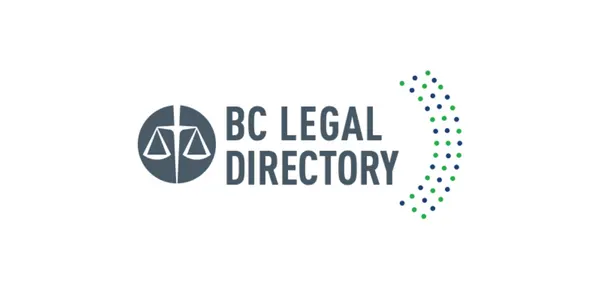
If the lender starts foreclosure proceedings, I've lost any chance of keeping my home.
Worried that you might lose your home because the bank is threatening to take it? If you default on your mortgage, the lender can start legal proceedings to take the property or sell it to pay the mortgage debt. This legal process is called foreclosure. Learn what to expect and what options you have if you’re facing foreclosure.
What you should know
A mortgage is a loan used to buy a home or other property. Under the law in BC, a mortgage gives the lender a charge — meaning an interest or a right — against the property being purchased. That charge gives the lender rights if the borrower defaults on the mortgage.
The most common way for a borrower to default is by not making payments under the mortgage as promised. (For more on what can cause a default, see our guidance for if you’re having difficulty paying your mortgage.)
If you default on your mortgage, the lender has the right to accelerate (speed up) the mortgage. This allows the lender to claim the full balance owed under the mortgage, plus interest and other costs, even though the mortgage term hasn’t yet expired.
The lender can then start foreclosure proceedings to take the property or sell it to pay the mortgage debt.
Try renegotiating your mortgage
In a foreclosure, the lender cares about getting its money back. They don’t care about getting fair market value for the property or what might be left over for you. If you suspect you won’t be able to pay your mortgage, try renegotiating it (see our guidance on if you’re having difficulty paying your mortgage). If that doesn’t work, consider putting your home up for sale immediately. That will help ensure it sells for fair market value and that you’re not out any less money than you need to be.
When you default on your mortgage, you don’t automatically lose your home.
If you miss a mortgage payment, the lender will usually send a reminder letter. If they don’t hear from you or receive the missed payment, the lender will then follow up with a demand letter.
In fact, under the law, the lender must send you a demand letter before they can start legal proceedings to take your home.
The demand letter must say exactly what you owe. It must also say that:
you have to pay a certain amount by a certain date to catch up on what you owe to reinstate your mortgage (restore it to good standing), or
you have to pay the whole amount you borrowed (not just what you owe) plus interest and expenses to redeem your mortgage (pay it off).
Our guidance for if you’re having difficulty paying your mortgage describes what’s involved in reinstating or redeeming your mortgage.
If you don’t do what the demand letter asks, your lender can start legal proceedings to take your home.
Don't ignore a demand letter
If you receive a demand letter, don’t ignore it. If you do, the legal proceedings will proceed without you, and you won’t get any say. As well, you will get little notice if your home is sold, or if the lender tells you that you have to move.
If you get a petition for foreclosure, act fast
If you receive a petition for foreclosure, get legal advice right away. To protect yourself and take part in the court proceedings, you must file a response within 21 days of getting a petition for foreclosure.
After a default, if you don’t reinstate the mortgage (by paying the amounts you owe) or redeem it (by paying the mortgage off fully) within the time set out in the demand letter, the lender can start foreclosure proceedings. Usually, this happens after you’ve missed three months of payments. But it can happen sooner.
The lender starts foreclosure proceedings by filing a petition in BC Supreme Court. The petition will ask the court to confirm the amount you owe and set a time period — usually six months, but sometimes shorter — during which you can redeem, or pay off, the mortgage.
At some point in the foreclosure process, the lender may also ask for an order that your home be sold, and for an order that the lender have conduct (control) of the sale.
The lender must bring the foreclosure action in a court near you
If there’s a court registry near where your home is located, the lender must start the action there. This is called the local venue rule.
The petition will set out what the lender wants the court to do, including:
confirm that the mortgage and debt exist
confirm the amount you owe, including the principal amount, interest and costs
set the amount of time you have to redeem the mortgage (pay it out in full)
grant a personal judgment for the debt against you and any guarantors
At least one affidavit will be filed with the petition. An affidavit is a written statement from the lender swearing that the information in the petition is correct.
Someone will serve you with the documents
The lender must give you a copy of the petition and the lender’s affidavit. They will likely use a process server to hand the documents to you. If the process server can’t find you, the court may allow the documents to be served by other means, such as by:
serving the documents on an adult at your home
posting the documents on the door of your home
printing a notice in your local newspaper
emailing or mailing the documents to you
You have 21 days to file a response to the petition
To protect yourself and take part in the court proceedings, you must file a response to the petition within 21 days of getting the petition. See below under work out the problem for details.
In a foreclosure action, the first court hearing is usually held within a month of when the petition was served on the borrower.
At the first hearing, the lender asks for an order setting a time period during which you can redeem, or pay off, the mortgage. That period of time is called the redemption period.
The default redemption period is six months
Under the law in BC, the default redemption period is six months. However, the court can order that it be shortened or extended.
A lender may ask the court for a redemption period shorter than six months for any of the following reasons:
you have little or no equity in the property
you aren’t maintaining the property
you’ve gone bankrupt
you’re not paying the property taxes or strata fees
What you need to show
To prevent the order, you would need to have evidence to disprove the lender’s claims. For example, if the lender says you have no equity in the property, you could bring an appraisal of the property showing it to be worth more than what you owe on the mortgage.
A lender may ask for access to the property if they think you aren’t maintaining it or have abandoned it. To prevent this order, you’d need to prove that you are keeping up the property. For example, you might bring repair bills or photographs.
Applying to extend the redemption period
Courts rarely order a redemption period longer than six months. What is more common is to apply later to extend the redemption period beyond six months. You will need to show that you have enough equity in the property to pay the lender the amount owed. You also need to show that there’s a reasonable chance of payment within the added time.
During the redemption period, the lender (or another creditor) may ask the court for an order for conduct of sale. This order gives the creditor control over selling your property to cover what you owe.
You might be able to oppose the order by showing you have equity in the property or you are making efforts to sell the property yourself. You can argue that your efforts to sell the property are preferable, since creditors may be inclined to want to sell the property faster, at a lower price, than you would like.
Even where an order for conduct of sale is made, you may be able to oppose the approval of the sale. Court approval must be obtained for any sale. The creditor with conduct of sale presents a buyer’s offer at a court hearing. You may be able to argue that the offer isn’t enough, and that more time should be allowed to get a better price. That said, where there is more than one offer, the property will almost certainly be sold.
Work out the problem
If you’re served with a petition, check that it was filed in the court registry closest to where your home is located (the lender must start the foreclosure action there).
Review the petition to make sure the information is correct. Check the amounts, interest rate, and the math. Make sure all the payments you made are recorded.
If you find any errors, note them and show them to the judge in court. Bring evidence to support your position. For example, let’s say that in calculating the amount you owe, the lender didn’t include the last payment you made. You could bring a bank statement showing you made the payment.
If the lender charges you a prepayment penalty
When you default on your mortgage and the lender demands immediate payment of your entire mortgage balance, the lender can’t charge you a prepayment penalty (a penalty for paying off your mortgage early). Check the lender’s calculations in the petition to confirm they haven’t charged a prepayment penalty.
Under the law in BC, once you’ve been served with a petition, you must prepare and deliver a form called a response.
First, prepare your response
The response form is available online. How you respond will depend on the lender’s demands. In a petition, a lender may ask the court for an order:
for personal judgment against you and any guarantors
for legal costs
setting out how much time you have to pay what you owe (the redemption period)
for access to the property
for conduct (control) of sale
In your response, you need to say whether you agree, disagree or take no position on each order the lender asks for. You need to explain why any orders should not be granted by the court.
Next, prepare your affidavit in support
To support your position, you must prepare any affidavits that you will use at the court hearing. The affidavit form is available online.
Attach any evidence you’ll rely on. This might include:
an appraisal of the property, showing it is worth more than what you owe under the mortgage
a letter from a new lender who has agreed to refinance your home
a letter from a real estate agent, showing you’re trying to sell the property
The affidavit must be sworn in front of an authorized person, such as a lawyer, a notary public, or a justice of the peace at the courthouse. There may be a small fee for this.
Then file the documents in court
You must file the response and your supporting affidavits in the BC Supreme Court.
And deliver the documents to the lender
You must also deliver two copies of the material to the lender.
The documents must be filed and delivered within 21 days of when you received the petition. (The time frame is longer if you live outside Canada.)
Options for free or low-cost legal advice
If you can’t afford to pay a lawyer for the whole court process, consider getting some legal advice to help you draft documents and prepare for court. See the options for free or low-cost legal advice.
You must attend the court hearing if you want to speak to the judge. If you don’t show up at the hearing, the court may still decide to grant the orders the lender is seeking. If you aren’t ready to present your case, ask the judge if you can have more time to prepare.
You don’t need to have a lawyer with you at your hearing — you can represent yourself. Judges appreciate when you are organized, reasonable and polite.
Before the hearing, prepare an outline of what you’ll say to the judge. Make a list of the points you want to address, and organize your evidence in the same order. Make enough copies of any documents to give to the judge and the lender’s lawyer.
If you choose to represent yourself, show up at least 15 minutes early. Let the clerk know the case you’re attending and that you’re acting for yourself.
Consider asking for an adjournment
If the lender asks for personal judgment against you, consider asking the court for an adjournment. If granted, this will postpone the application for judgment. Your credit score will go down the moment a judgment is entered against you, which will make it more difficult to get refinancing.
When the judge has heard from everyone at the hearing, they will decide what should be done next. The judge will issue an order nisi, which is the main order in foreclosure proceedings.
An order nisi always includes:
the length of the redemption period
a personal judgment against you for the amount you owe
Your right to reinstate or redeem your mortgage continues after the order nisi is granted. You can redeem or reinstate your mortgage up until the court approves a sale of your home.
During the redemption period, the lender (or another creditor) might apply to court for a conduct of sale order. This gives the creditor the right to be in control of the sale of your home. If the order is granted, there must be a second court hearing before your home is sold. Court approval must be obtained for any sale.
If the creditor receives an offer on the property and seeks court approval for the sale, you can oppose the order if you think the price is too low.
If you don’t reinstate or redeem your mortgage by the end of the redemption period, the lender can apply to court to have the property transferred to the lender or sold.
An order transferring the property to the lender is known as a final order of foreclosure. It gives the lender formal title to your property.
Common questions
Foreclosure cases are usually dealt with fairly quickly by the courts. There’s rarely a formal trial.
The first court hearing is usually held within a month of when the petition was served on the borrower. At the first hearing, the lender sets the length of time — usually six months, but sometimes shorter — during which the borrower can redeem, or pay off, the mortgage.
If the borrower doesn’t redeem the mortgage by the end of the redemption period, the lender applies to court to have the property transferred to the lender or sold.
In BC, no matter what the mortgage contract says, your lender can’t sell your home without either your consent or the court’s permission through a court order.
(Mortgage contracts usually have a clause that gives your lender the right to take possession and sell your home as soon as you break the contract by missing a payment. This is called the power of sale.)
Yes. You can continue living in your home while foreclosure proceedings are going on.
Yes. You can redeem your mortgage (by paying it off in full) up until the court approves a sale of your home.
At the first court hearing in a foreclosure action, the court will set the length of time that you have to come up with enough money to at least pay the arrears. This period of time, called the redemption period, is usually six months. You can redeem your mortgage anytime during the redemption period.
If you don’t redeem the mortgage by the end of the redemption period, the lender can apply to court to have the property transferred to the lender or sold.
No. You have the right to represent yourself in a foreclosure hearing. If you choose to represent yourself, make sure you’re well prepared for the hearing. Judges appreciate when you are organized, reasonable and polite. Show up at least 15 minutes early to the hearing. Organize your speaking points and supporting documents. Make your points clearly and concisely.
Who can help

Credit Counselling Society
A non-profit society that supports and counsels people struggling with debt.

Access Pro Bono's Free Legal Advice
Volunteer lawyers provide 30 minutes of free legal advice to people with low or modest income.

Access Pro Bono’s Everyone Legal Clinic
Clinicians provide affordable fixed-fee services on a range of everyday legal problems.

Lawyer Referral Service
Helps you connect with a lawyer for a complimentary 15-minute consult to see if you want to hire them.

BC Legal Directory
Search for a lawyer by community or legal issue. From the Canadian Bar Association, BC Branch.

